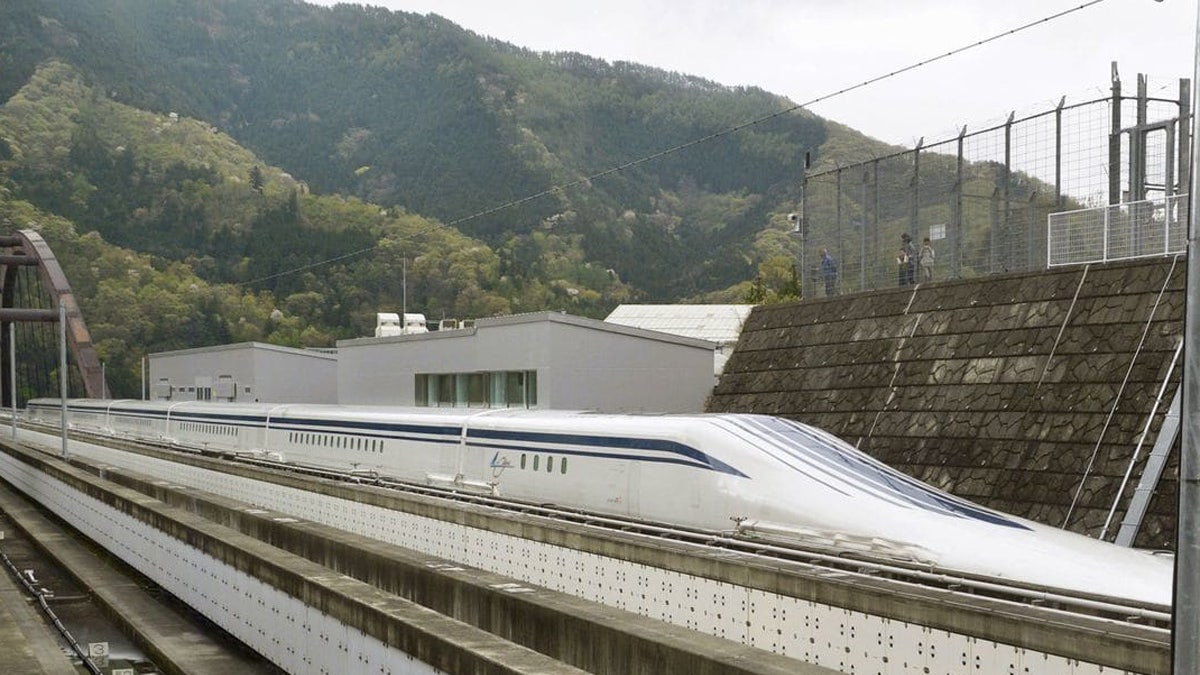
The fastest passenger train in the world runs on the Maglev Test Line in Tsuru, west of Tokyo. Maglev trains could soon connect Washington to Baltimore and eventually New York. (AP)
Imagine zipping along at 311 mph on a train from Baltimore to Washington, D.C. in a mere 15 minutes or from the nation's capital to New York in one hour.
If it sounds implausible, it's not, and it could be a reality in less than 10 years.
The people behind Northeast Maglev, a team of private investors, want to connect the two cities with a 40-mile "superconducting magnetic levitation train system," known as maglev, which would be the first leg of the infrastructure to carry passengers between the two urban centers.
APPLE SUPPLIERS SUFFER AS IT STRUGGLES TO FORECAST DEMAND
In terms of stations, the District of Columbia's Mount Vernon Square is in the running for one, and either Inner Harbor or South Baltimore will likely get one. Although a third station is planned for Baltimore-Washington International Marshall Airport, there won't be any additional stops between the two cities.
Proponents claim the rail network would ease road congestion and revolutionize train travel in the U.S. by applying technology that's being tested in Japan, a country revered for the ease and safety of its high-speed rail system.
Unlike trains that run on regular steel railroad tracks, maglev trains "levitate" between the walls of a concrete structure called a guideway. The U-shaped guideway has walls surrounding the trains on both sides, which makes the system free from the possibility of derailment.
“This is a transformational change to this corridor, and it’s long past due,” David Henley, project director for Baltimore-Washington Rapid Rail, which would develop and operate the train, told the Washington Post.
According to Amtrak, the Northeast Corridor is already home to 52 percent of the nation's worst highway bottlenecks. A study conducted by the organization predicts a 200 percent increase in delays over the next 30 years. The Northeast Maglev team's own fact sheet shows that 51 million people live in the Northeast Corridor region, responsible for 20 percent of the country's jobs — numbers that are both expected to increase.
The first stretch of the project could cost between $10 to $12 billion, the Post reports. The team of private investors and a sister company, Baltimore-Washington Rapid Rail, claim to have secured financial commitments, including $5 billion from Japan.
NEO-NAZIS HAVE NO FIRST AMENDMENT RIGHT TO HARASSMENT, JUDGE RULES IN DAILY STORMER CASE
The Post reports that the two potential routes are parallel to the Baltimore-Washington Parkway, and about 75 percent of the route would run about 80 to 260 feet underground.
Northeast Maglev, which is headquartered in Maryland, has a number of former politicians and executives on its advisory board, including Christine Todd Whitman, George Pataki, Ed Rendell and Tom Daschle.
The next steps include an environmental review process that won't be done until early 2020. Although tunneling could begin as early as fall of 2020, the Federal Railroad Administration could still rule against building the infrastructure.




















